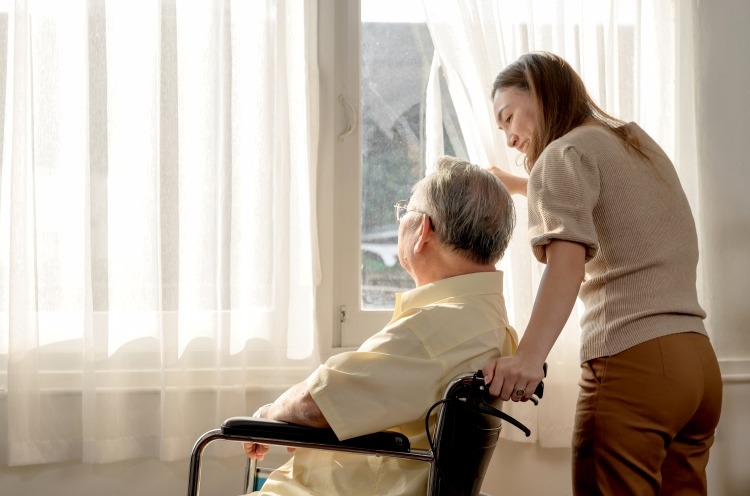1
2
3
4

As you or a loved one prepares to transition from the hospital to a skilled nursing facility for short-term rehabilitation, you may be wondering what to pack. While you’ll have the opportunity to trade hospital gowns for your own comfortable clothing, it’s important to bring a few additional essentials for a smoother stay. This Inpatient rehab packing list will help ensure you’re ready with everything you need so you can focus on your recovery. Be sure to check with the facility if family members will need to assist with laundry during your stay.
Comfortable Clothing: Pack loose-fitting clothes like T-shirts, sweatpants, or stretch pants for rehab therapy and daily activities. If you’ve had leg surgery, bring shorts as well.
Shoes: Wear soft-soled or athletic shoes with non-skid soles. Avoid backless shoes for safety.
Pajamas & Robe: Bring season-appropriate pajamas, a robe, and slippers with traction.
Underwear & Socks: Pack enough underwear and socks for your stay, avoiding tight or elastic-topped socks.
Layering Options: Include sweaters or jackets for comfort, as room temperatures can vary.
Toiletries: Pack your essential personal hygiene products, including toothbrush, toothpaste, soap, shampoo, deodorant, and a hairbrush or comb. If you wear makeup or have specific hair care products, include those as well.
Denture Care: If applicable, bring denture adhesive and cleaner.
Eyewear & Hearing Aids: Don’t forget your glasses, contacts, and hearing aids, along with any extra batteries or cases.
Note: Many facilities provide basic items like toothbrushes and toothpaste, but it’s always best to bring your preferred brands for comfort.
Books or Magazines: Bring some books, magazines, or puzzles to enjoy during downtime.
Phone or Electronics: Pack your tablet, phone, or laptop along with their chargers for entertainment, communication, or browsing the web.
Personal Comforts: A favorite pillow, blanket, or family photos can help make your room feel more like home.
Notepad/ File: Bring or request something to help you keep track of educational information, questions, daily schedules, and more.
Small Essentials: Consider packing a small basket for easy access to your phone, charger, and reading materials.
Medications: Bring a complete list of all medications you’re taking, including dosages and frequencies. Be sure to include any over-the-counter medications as well.
Medical Equipment: If prescribed, bring any medical equipment you use at home, such as a CPAP machine, walker, braces, or splints. Don’t forget assistive devices like a cane or wheelchair, if needed. It is recommended you discuss any equipment needs with the rehab staff prior to arriving.
ID & Insurance Cards: Have copies of your ID and insurance cards readily available for admission and billing purposes.
Emergency Contacts: Bring a written list of emergency contacts, including close family members and your primary care physician.
Legal Documents: If you have advance directives or a healthcare proxy, be sure to bring copies for the facility’s records.
Valuables: Leave jewelry, watches, and large sums of cash at home to prevent loss or theft.
Strong Fragrances: Avoid bringing perfumes, colognes, or scented lotions to ensure a comfortable environment for patients and staff with allergies.
Medications: Do not bring actual medications unless instructed—just bring a complete list of the medications you’re currently taking.
As you prepare for your subacute rehab stay, don’t hesitate to reach out with any questions or concerns you may have. Open communication ensures you’ll have everything you need for a smooth transition and a comfortable experience. Remember, the focus of your stay is on recovery and gaining strength, so pack with that in mind. We’re here to support you every step of the way and look forward to helping you on the path to a speedy recovery!
[1] Beckley, Jody. “Discover What to Pack for Your Transition from the Hospital to Rehab.” Optalis Healthcare, 1 Aug. 2024, www.optalishealthcare.com/what-should-i-pack-for-a-post-hospital-rehab-stay-2/.
[2] “What to Bring for Inpatient Therapy: Inpatient Rehab: Physical Rehabilitation Services: Cape Fear Valley Health.” Https://Www.Capefearvalley.Com, www.capefearvalley.com/rehab/in_bring.html. Accessed 7 Oct. 2024.
[3] “What to Bring: A Packing Checklist for UPMC Rehabilitation Institute Patients.” UPMC, www.upmc.com/services/rehab/rehab-institute/for-patients/checklist. Accessed 7 Oct. 2024.
The information provided in the article is for general informational purposes only. This information is not a substitute for medical advice. Accordingly, before taking any actions based upon such information, you are encouraged to consult with the appropriate professionals.